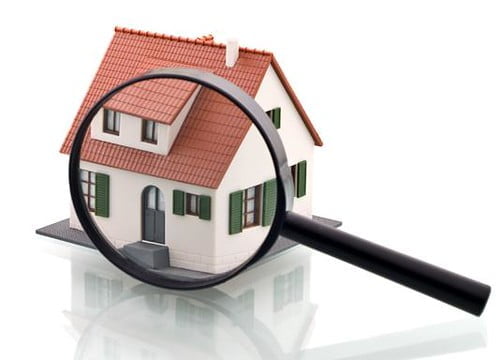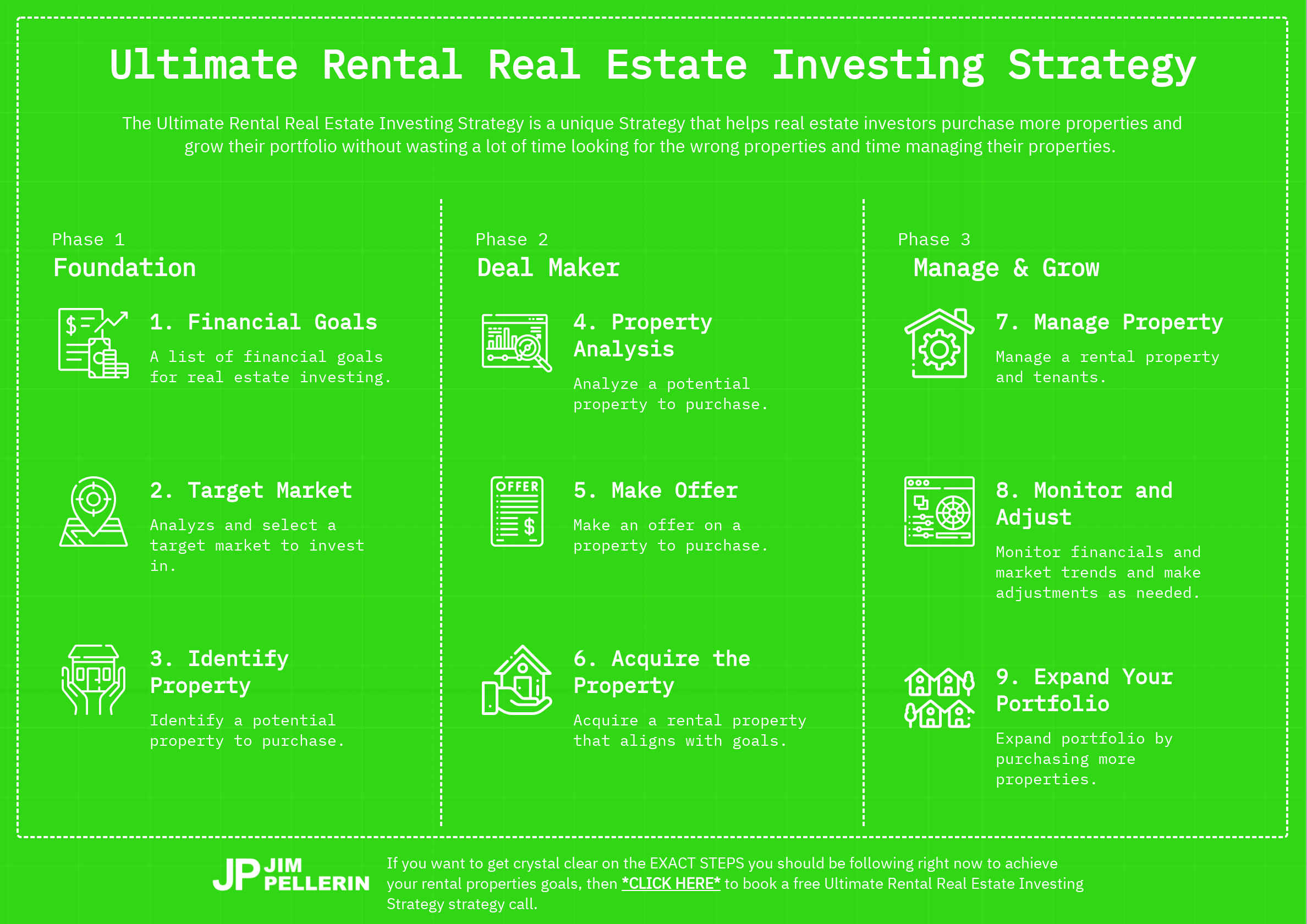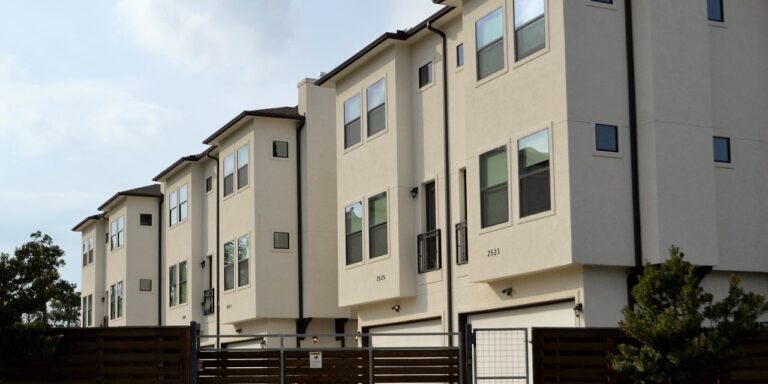
In this article, I want to explain how to evaluate a real estate investment, specifically a real estate investment from a rental property.
There are many types of real estate investing strategies but rentals are probably the most common.
There are 3 things you can do to evaluate a real estate investment when it comes to looking at rentals.
1. Cap Rate

The first indicator is the Cap Rate.
Cap Rate or Capitalization Rate is the percent return that you would get if you had paid cash for a real estate investment. It’s the Net Operating Income divided by the Purchase Price.
You’re looking at how much money you have to put into the investment if you were to pay cash without any financing. Specifically, what kind of return you would get on it if it’s fully capitalized (no financing).
For example, let’s say you bought a piece of real estate worth $300,000 for cash and it’s making you $30,000 a year after all your expenses. If you take that thirty thousand and divide it by your cost of $300,000, you are getting a 10% return on your investment.
It’s similar to when you buy stocks. If you bought stocks at $300,000 and it was paying you $30,000 a year. That’s a 10% return on your investment.
So the Cap Rate in this example is 10%.
Net Operating Income
Now the key here is that the $30,000 return is after expenses.
The Cap Rate uses what’s called your Net Operating Income.
Net Operating Income = Rental Income – Operating Expenses
Your net operating income is your rental income minus the operating expenses of the property. Simply subtract all the expenses from the property so it’s the income that you get after expenses, excluding financing costs.
Cap Rates can be subjective
The problem with the Cap Rate is that it can be subjective and not properly represented. Cap Rates tend to have numbers in them that are incorrect. Either the income is overstated, or the expenses are understated.
For example in that property that I mentioned earlier, if the gross income was $40,000 and you had expenses of $10,000, then your net operating income would be $30,000, just like I said earlier. And if you’re selling that property or if you’re buying that property for $300,000 and you paid cash for it, the Cap Rate would be 10%. Pretty straightforward … we just went through that, right.
But let’s say that the seller had exaggerated the income and it really wasn’t $40,000. It was only $35,000. And let’s say that the expenses were under-exaggerated. So instead of them being $10,000, they were actually $15,000. Now your net operating income is only $20,000 because you take your $35,000 gross income minus your $15,000 operating expenses and now you only have $20,000 left.
Next, you divide that $20,000 net operating income by the $300,000 price that you would have paid for that house if you had bought it for cash. Now your Cap Rate is only 6.67% and that’s quite a difference from the 10% Cap Rate that was originally stated in the listing.
Calculate Your Own Cap Rate
When looking at Cap Rates, it’s best to do your own due diligence and figure out your own cap rates. You can also use other ways to evaluate a real estate investment.
Cap Rates vary depending on the area and the property type. They can be as high as 10% or more and as low as 2%. Both could be good, depending on the area. Obviously, a lower Cap Rate would see less of a cash return so other factors such as potential appreciation need to be factored in when looking to evaluate real estate investment.
2. Gross Rent Multiplier (GRM)

Another indicator you can use is the gross rent multiplier (GRM). The GRM is the price divided by the actual rental income, before expenses.
Gross Rent Multiplier = Purchase Price / Rental Income
In the previous example, if the rents were $40,000 and the purchase price was $300,000, the gross rent multiplier is 7.5. That’s $300,000 divided by $40,000.
The lower the gross rent multiplier the better.
A good rule of thumb to use is that a gross rent multiplier of 7 is a good number. This means you don’t want to have a GRM greater than 7. This depends on the current financing rates and your down payment amount.
There should be enough money to be able to pay for expenses and for financing if your GRM is 7.
So, if rents are $40,000 then the maximum purchase price you should be paying if your GRM is 7, is $280,000.
In our example earlier where you had total rents of $40,000, you should not pay more than $280,000 for that house that’s listed at $300,000. ($40,000 x 7)
So, you could make an offer based on the GRM of 7 for $280,000. If they accept the offer then you can do your due diligence and check the rents and expenses in more detail.
GRM gives you a good starting point to use to evaluate a real estate investment.
3. Rental Income

Another thing you can do to evaluate a real estate investment is validate the rental income. Look at comparable rents in the neighborhood.
Look at buildings of the same type and condition in the same neighborhood to see what the rents are. Use those as a comparison.
Then what you can do is add a 5% vacancy rate provision. That should give you a good indicator of what the gross rental income should be for that property.
Another way to validate the rental income is to ask the owner for their tax filing for the previous year. Most people don’t tend to exaggerate how much income they claim when they file their taxes.
How to Evaluate a Real Estate Investment Summary

In summary, 3 indicators you can use to evaluate a rental property are:
- Cap Rate. Personally, I never use Cap Rates. Ignore the Cap Rate because there are too many opportunities for the current owner to exaggerate the income or under-estimate the expenses.
- Gross Rent Multiplier. Determined the rental income by using the comparison method. Look at rentals in the area or ask for the owner’s tax filing; and
- Rental Income. Look at market rents in the area or ask the owner for the previous tax filings.
So that’s basically a quick and dirty way to evaluate a real estate investment before purchasing a property. As you get closer to finalizing the deal you will want to validate all the income and expenses.





